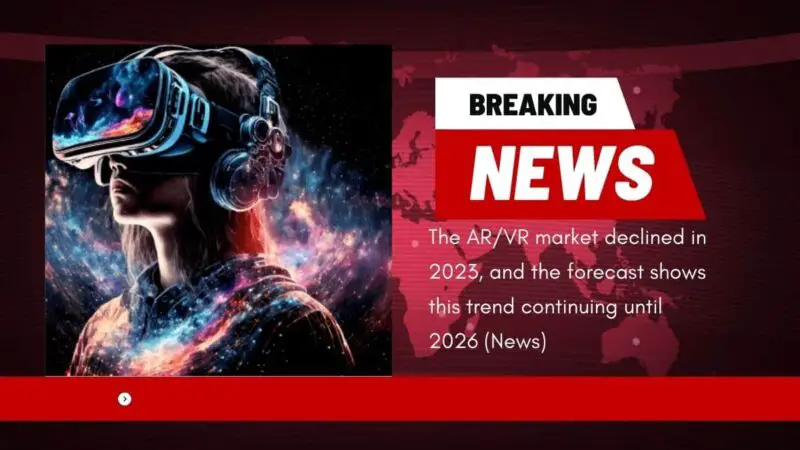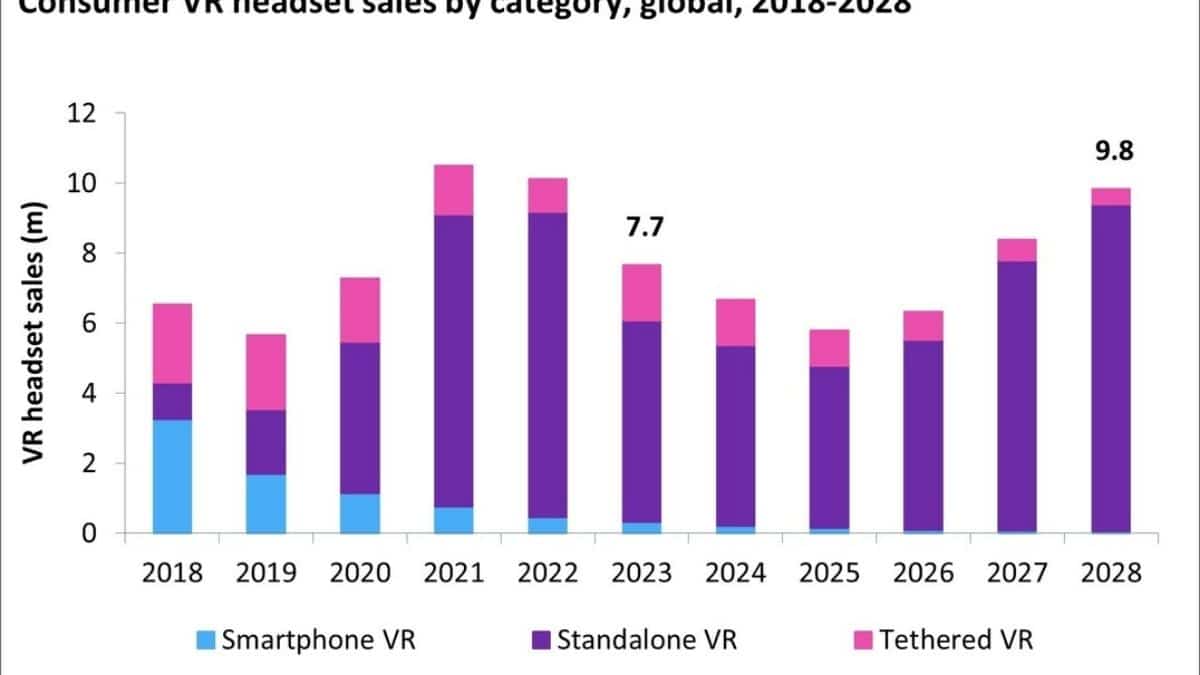In 2023, the virtual and augmented reality market hit a bit of a rough patch. Sales of VR/AR headsets dipped by 8.3%, landing at 8.1 million units sold. Despite the launch of some pretty exciting products like Sony’s PSVR and Meta’s Quest 3, it seems economic downturns and cautious spending by consumers and businesses alike took their toll. But there’s a silver lining looking forward!
Experts are predicting a significant rebound in 2024 with a 46.4% surge in sales. This optimism is largely fueled by the full-year availability of Meta’s Quest 3 and the much-anticipated launch of Apple’s Vision Pro. These headsets are more than just gadgets; they’re a statement of where technology is heading, though their higher price tags might put some potential buyers off.
AR headsets are expected to experience an uptick in sales, particularly as more budget-friendly options enter the market. These devices are poised to transform our work and play, making activities such as watching movies and working more interactive and engaging. However, more premium options like Microsoft’s HoloLens 2 and Magic Leap 2 might not see the same sales velocity, mainly due to their higher costs.
Challenges and Shifts
Not everything is rosy, though. The overall headset market saw a 24% drop in 2023, with a steady user base of around 23.6 million VR headsets. Spending on VR content also took a dive, suggesting a wider trend of market caution and perhaps some fatigue after the initial pandemic-driven surge.
Several factors contributed to this downturn. Inflation pinched wallets, reducing disposable income for luxury items like VR headsets. Additionally, key products in the market didn’t perform as expected. Meta’s Quest 3, though technologically advanced, was seen as too expensive for what it offered. Sony’s PSVR2 struggled with a lack of compelling games, and Pico 4 faced challenges due to ByteDance’s reduced focus on VR.
Looking ahead, 2024 might continue to be challenging. With new gaming consoles and gadgets on the horizon, VR headsets could be pushed down the priority list for consumers. Plus, apart from Meta, there’s a noticeable lack of substantial investment in VR from other tech giants, which might slow down the industry’s growth for a while.
Future Outlook and Growth
Despite immediate challenges, the future for AR and VR appears promising. Projections show AR unit sales explosively leaping from 0.5 million in 2023 to 6.8 million by 2027, and VR sales are also expected to grow significantly, potentially reaching 21.9 million units by 2027. This growth demonstrates a strong, enduring interest in immersive technologies and their potential across various sectors.
The diversification of AR products is a particularly exciting development. AR, offering options for enterprise users, gamers, and everyday consumers, is set to integrate more deeply into our daily lives. This isn’t just about technology; it’s about how we interact with the world and each other. As mixed reality gains attention, it will likely open up new possibilities for both entertainment and practical applications.
In conclusion, while the VR/AR market has faced its share of challenges, the underlying interest and potential for growth remain robust. As technology advances and prices gradually lower, it’s likely we’ll see these immersive technologies become a more commonplace part of our lives. The journey of VR and AR is just beginning, and the next few years will play a crucial role in shaping its trajectory, whether for work, play, or anything in between.
Also Read: The Color Purple (2023) Movie Review












